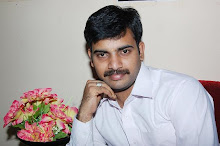 The common thread of thought in the religious beliefs of the Indian subcontinent upholds a single Reality (as in absolute monoism) and holds in reverence each of the several manifestation of the Ultimate Reality in the forms of Gods.
The common thread of thought in the religious beliefs of the Indian subcontinent upholds a single Reality (as in absolute monoism) and holds in reverence each of the several manifestation of the Ultimate Reality in the forms of Gods. Bhrama, Vishnu and Shiva are revered as the Supreme Trinity of multitude of manifestations of Divinity. It is said that all that is true, all that is good and all that is beautiful is God (Satyam Shivam Sundaram).Shiva is referred to as 'the good one' or the 'auspicious one'. Shiva - Rudra is considered to be the destroyer of evil and sorrow.
Bhrama, Vishnu and Shiva are revered as the Supreme Trinity of multitude of manifestations of Divinity. It is said that all that is true, all that is good and all that is beautiful is God (Satyam Shivam Sundaram).Shiva is referred to as 'the good one' or the 'auspicious one'. Shiva - Rudra is considered to be the destroyer of evil and sorrow.  Shiva - Shankara is the doer of good. Shiva is 'tri netra' or three eyed, and is 'neela kantha' - blue necked (having consumed poison to save the world from destruction. Shiva - Nataraja is the Divine Cosmic Dancer. Shiva - Ardhanareeswara is both man and woman.
Shiva - Shankara is the doer of good. Shiva is 'tri netra' or three eyed, and is 'neela kantha' - blue necked (having consumed poison to save the world from destruction. Shiva - Nataraja is the Divine Cosmic Dancer. Shiva - Ardhanareeswara is both man and woman.
 He is both static and dynamic and is both creator and destroyer. He is the oldest and the youngest, he is the eternal youth as well as the infant. He is the source of fertility in all living beings. He has gentle as well as fierce forms. Shiva is the greatest of renouncers as well as the ideal lover. He destroyes evil and protects good. He bestows prosperity on worshipers although he is austere. He is omnipresent and resides in everyone as pure consciousness.
He is both static and dynamic and is both creator and destroyer. He is the oldest and the youngest, he is the eternal youth as well as the infant. He is the source of fertility in all living beings. He has gentle as well as fierce forms. Shiva is the greatest of renouncers as well as the ideal lover. He destroyes evil and protects good. He bestows prosperity on worshipers although he is austere. He is omnipresent and resides in everyone as pure consciousness. Shiva is inseparable from Shakti - Parvati the daughter of Himavaan - Haimavati. There is no Shiva without Shakti and no Shakti without Shiva, the two are one - or the absolute state of being - consciousness and bliss.The five mantras that constitute Shiva's body are Sadyojaata, Vaamadeva, Aghora, Tatpurusha and Eesaana.
Shiva is inseparable from Shakti - Parvati the daughter of Himavaan - Haimavati. There is no Shiva without Shakti and no Shakti without Shiva, the two are one - or the absolute state of being - consciousness and bliss.The five mantras that constitute Shiva's body are Sadyojaata, Vaamadeva, Aghora, Tatpurusha and Eesaana.
 Eesaana is Shiva not visible to the human eye, Sadyojaata is Shiva realized in his basic reality (as in the element earth, in the sense of smell, in the power of procreation and in the mind). The Vishnudharmottara Purana of the 6th century CE assigns a face and an element to each of the above mantras. (Sadyojaata - earth, Vaamadeva - water, Aghora - fire, Tatpurusha - air and Eesaana - space).
Eesaana is Shiva not visible to the human eye, Sadyojaata is Shiva realized in his basic reality (as in the element earth, in the sense of smell, in the power of procreation and in the mind). The Vishnudharmottara Purana of the 6th century CE assigns a face and an element to each of the above mantras. (Sadyojaata - earth, Vaamadeva - water, Aghora - fire, Tatpurusha - air and Eesaana - space).
 The names of the deified faces with their elements are Mahadeva (earth), Bhairava (fire), Nandi (air), Uma (water) and Sadasiva (space). Panchamukha lingams have been seen from the 2nd century onwards. The Trimurthi Sadasiva image of Shiva in the Elephanta Caves near Mumbai is a portrayal in stone, of the five faces of Shiva. The fourth and the fifth heads are not seen in this image here.
The names of the deified faces with their elements are Mahadeva (earth), Bhairava (fire), Nandi (air), Uma (water) and Sadasiva (space). Panchamukha lingams have been seen from the 2nd century onwards. The Trimurthi Sadasiva image of Shiva in the Elephanta Caves near Mumbai is a portrayal in stone, of the five faces of Shiva. The fourth and the fifth heads are not seen in this image here.
 The works of sages Vyasa, Vasishta, Patanjali, the poet Kalidasa, the tamil saint poets Nayanmars - Appar, Sundarar, Sambandar, the poet Manikkavachakar, the mystic tamil siddhas, tantric philosophers, the spiritual leader Adi Sankaracharya and others such as Basavanna and Appayya Deekshitar speak of the attributes of Shiva.
The works of sages Vyasa, Vasishta, Patanjali, the poet Kalidasa, the tamil saint poets Nayanmars - Appar, Sundarar, Sambandar, the poet Manikkavachakar, the mystic tamil siddhas, tantric philosophers, the spiritual leader Adi Sankaracharya and others such as Basavanna and Appayya Deekshitar speak of the attributes of Shiva.





No comments:
Post a Comment